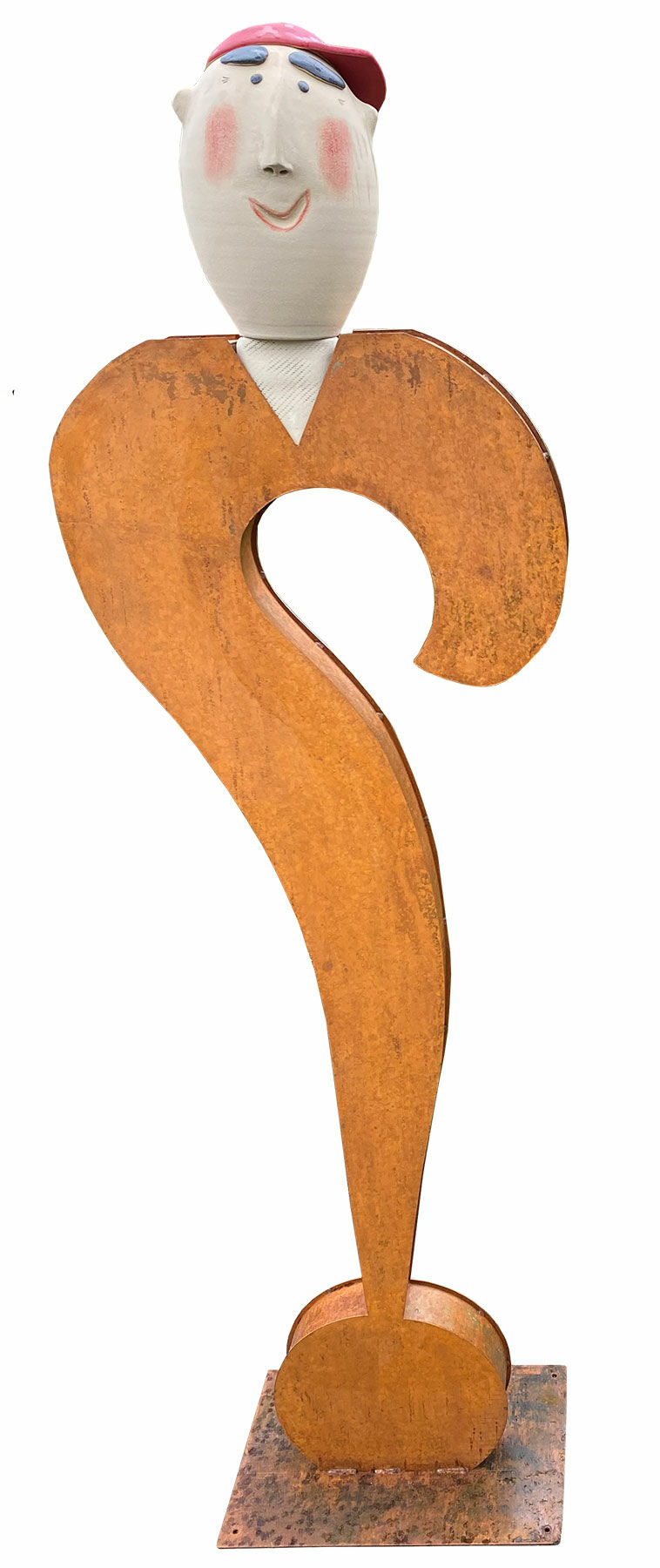Life-size garden sculpture "Karl"
Life-size garden sculpture "Karl"
Quick info
metal | ceramic | size approx. 176 x 45 x 30 cm (h/w/d) | weight approx. 25 kg
Detailed description
Life-size garden sculpture "Karl"
The life-size figure is a bold statement with its metal body with rust patina shaped like an exclamation mark and its head made of hand-modelled, frost-proof fired, colourfully painted ceramic. What is he pondering? Size approx. 176 x 45 x 30 cm (h/w/d). On a flat base. Weight approx. 25 kg.

About Susanne Boerner
Susanne Boerner, born in Göttingen, Germany, has been working successfully for many years as a designer of ceramics, wood and metal. She is an expert in handicraft, and this is how her weatherproof sculptures are created in limited quantities. Her sculptures, which are often made of unusual material mixes like ceramics, wood and metal, are shaped and painted by hand. Boerner's distinctive objects are colourful, a little quirky - and always full of fantasy and humour.
Her works have also been spreading cheerfulness in Brussels since March 2017: On the 60th anniversary of the Treaties of Rome, her large ensemble of figures "European Citizens", was set up as a permanent exhibition in front of the European Commission building. 13 life-size figures made of metal and clay adorn Jean Monnet Square, named after one of the founding fathers of European unification.
Ceramic product made of kaolin, quartz and feldspar.
Porcelain is formed by turning or pressing and figurative objects are cast. Complex objects have to be cast in separated steps and sections and then "assembled". After the moulding, the pieces are dried and "annealed" at about 900 °C. Next, the glaze will be applied and fired at temperatures between 1,240 °C and 1,445 °C. In renowned manufactures, the porcelain is painted by hand whereby each colour has to be fired individually and in compliance with narrow temperature tolerances.
Porcelain was invented in China and became widespread in Europe from the 16th century onwards. The first European porcelain factory was founded in Meissen, Germany in 1710.
Other famous European porcelain factories include Fürstenberg, Höchst, Schwarzburger Werkstätten, Lladró, Nymphenburg, KPM, Augarten, Sèvres, Limoges, Royal Copenhagen, Worcester. Individual factories label their products with their personal porcelain stamps so that for the collecter it is easy to identify their origin.
A plastic work of sculptural art made of wood, stone, ivory, bronze or other metals.
While sculptures from wood, ivory or stone are made directly from the block of material, in bronze casting a working model is prepared at first. Usually, it is made of clay or other easily mouldable materials.
The prime time of sculpture after the Greek and Roman antiquity was the Renaissance. Impressionism gave a new impulse to the sculptural arts. Contemporary artists such as Jorg Immendorf, Andora, and Markus Lupertz also enriched sculptures with outstanding works.






